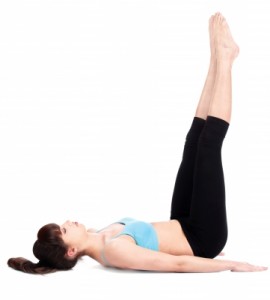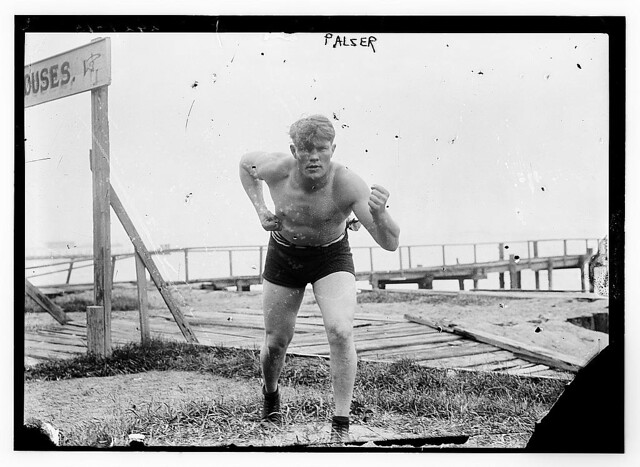Monthly Archives: January 2013
Joey’s testimonial of low back pain recovery
Low Back Exercise
Low back exercises are like flossing daily, they can keep the doctor away!
The following are 3 basic low back exercises for people who don’t have low back pain and want an easy, daily routine to keep the chiropractor away:
1. Ball Extentions
– get on your knees, feet against the wall
– roll the exercise ball into your lap
– drape your body over the ball
– slowly straighten your legs until top of your chest is OFF the ball, but your belly is ON the ball
– hands at ears
– bend forward until chest touches ball, then curl back to lift chest (NOT belly) off ball
2 sets of 15-20 repetitions

photo courtesy marin/freedigitalphotos.net
2. L Sits
– lay flat on your back
– hands flat on ground next to your hips
– bend knees and bring them up to 90 degrees (perpendicular with floor)
– straighten legs out as much as you can and hold this position
2 sets of 30 seconds

photo courtesy marin/freedigitalphotos.net
3. Side Planks
– use hand to prop yourself up on your side
– straighten legs and raise hips up to form straight line with your body
– hold for 30 seconds flip over and so same on opposite side
Do 2 x each side overall

photo courtesy marin/freedigitalphotos.net
Headache Diet 101
***This blog article is meant to ensure your daily food intake includes the essential headache-fighting ingredients below. Please ensure you also add a variety of fruits and vegetables.
FOOD TO INCLUDE ON DAILY BASIS:
1. Omega 3 (fish oils) is type of EPA (eicosapentaenoic acid)
WHY?: natural anti-inflammatory
WHERE?: capsules (50 g) AND/OR natural foods: e.g.: salmon, mackerel, trout, herring.
2. calcium
WHY?: decrease vasospasm, increase serotonin
WHERE?: capsules AND/OR milk, yogurt, cheeses, broccoli, almonds, salmon, apricots, orange, tofu.
3. magnesium (citrate) **take separate time than Calcium or else Calcium used up to help body absorb magnesium.
WHY?: helps sleep, decrease vasospasm, good for menstrual headaches
WHERE?: Capsules AND/OR tofu, whole grain cereals, broccoli, spinach, black beans, etc.
4. vitamin D
WHY?: helps absorb calcium, natural anti-inflammatory
WHERE?: capsules AND/OR 20 minutes sun exposure daily, butter, milk, sardines, eggs.
5. water
WHY?: proper hydration helps nervous system function better
WHERE?: no need to use filtered water, keep jug of tap water in fridge, drink at least 4 coffee cups of water per day
______________________________
FOODS TO AVOID:
- excessive alcohol (social drinking once per week is okay)
- caffeine (no coffee, no energy drinks, no sodas)
- chocolates
- cheeses
- excessive red meat (limit yourself to 3 red meat meals per week, instead use beans + rice, fish, lean chicken, etc)
- table salt
- processed sugar (avoid candy bars, ice creams, etc)
- avoid fast food
- avoid white flour products (no white rice, white pasta, white bread, etc)
Exercise Is Key To Treating Low Back Pain

Many low back pain sufferers jump from one treatment to another and never get relief.
They will try chiropractic, massage, physio, acupuncture, etc. And yet continue to suffer.
In the past 2 years I’ve had the privilege of teaching a “Low Back Recovery” class at the University of Victoria. I never cease to be amazed at how many people needlessly suffer from lower back pain.
As a chiropractor I believe in “hands on” treatment. Deep tissue work, stretching the patient and adjusting their spines are all very key in treating low back pain.
However, very often, the missing ingredient is exercise.
For the past 10 years, I’ve worked in an exercise rehabilitation clinic and have been able to add exercise to the other treatments I do on my patients. The results speak for themselves.
If a patient does not begin and continue a low back exercise program, they will most likely never get full relief:
Fitness Prevents Dementia
“A walk a day keeps Alzheimer’s away!”
No joke.
A recent study by the Edinburgh University showed that people over 70 who walked during the week had less brain shrinkage then those who were sedentary. Researchers followed nearly 700 people for 3 years, performing before-and-after brain MRI’s to determine their findings.
The study also claimed that reading books or doing crossword puzzles does not seem to help as much as regular, non-strenuous exercise.
Seniors who walked during the week had less damage to the inner part of the brain (i.e.: the white matter) and they had more outer brain (i.e.: gray matter).
So it appears you can increase your brain size with even a mild form of regular exercise.
A Harvard Medical School article stated that a review of literature on depression examined evidence going back to 1981 and concluded that in younger and older patients with depression, regular walking was an effective treatment for emotional problems.
It appears something even as simple as daily walks can significantly enhance mental and emotional well being.
If you are simply starting out with an exercise program, walking 3 to 5 days per week is enough to see a boost in your brain’s health.
As time goes on, a good idea is to diversify your activities. Joining a local recreation centre offers access to swimming, weight lifting and other fitness activities. This keeps you interested and it keeps your brain and body adapting to new acitivities. Which increases the degree to which your brain grows and benefits from an active lifestyle.
So you see, it’s easy to make your brain healthy and stave off unwanted ailments!
Get out there and enjoy a nice walk today.
A Good Mattress Makes All the Difference
I recommend you also purchase an appropriately sized memory foam pillow from therapeutica.com.



